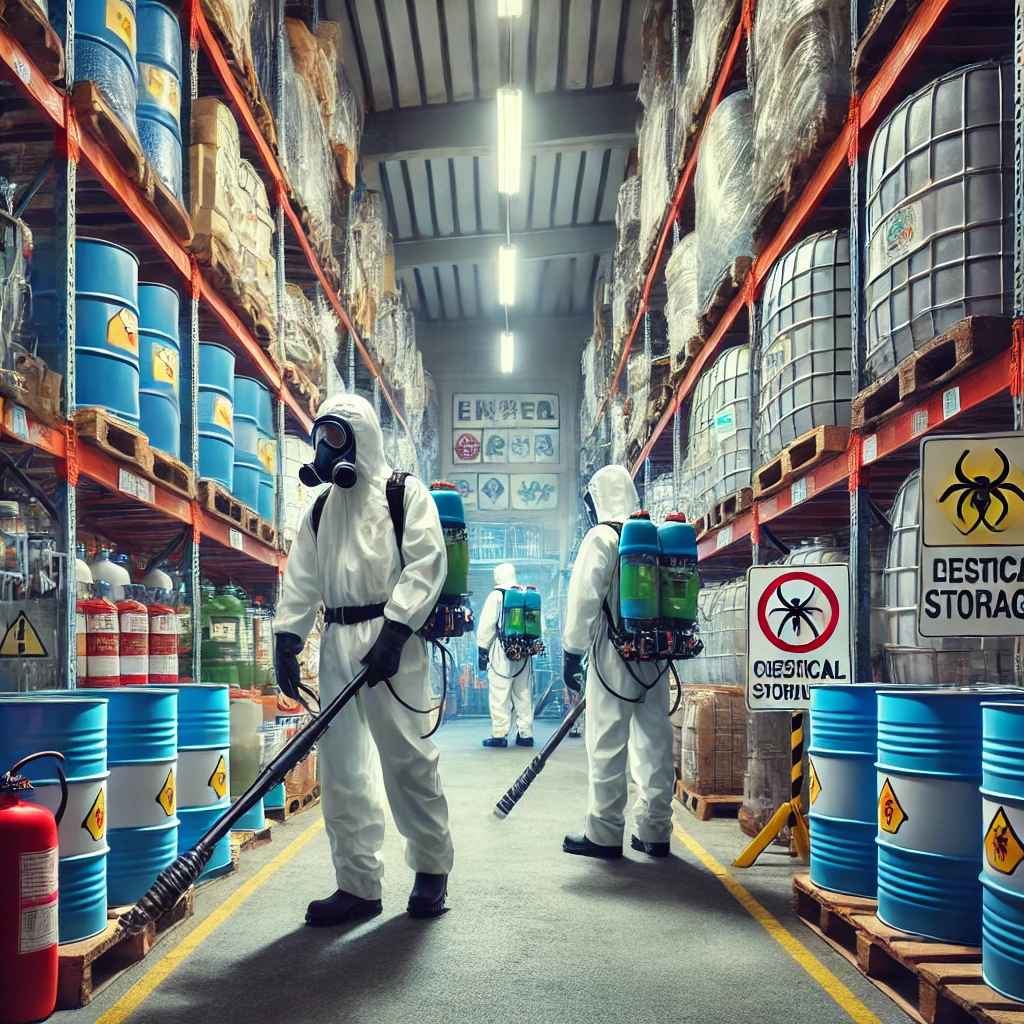
Introduction to Fumigation in Chemical Storage Facilities
Fumigation in chemical storage facilities is a critical practice to prevent contamination and mitigate risks associated with pest infestations. These facilities store a variety of chemicals, many of which are hazardous and require strict safety protocols to manage. Pests such as rodents, insects, and birds can cause significant damage by contaminating chemicals, chewing through storage containers, and creating unsafe conditions that increase the risk of spills or fires. Effective fumigation and pest management are essential to maintain the integrity of stored chemicals and protect both human health and the environment.
Importance of Pest Control in Chemical Storage
Pest control in chemical storage facilities is vital for several reasons. Firstly, pests can directly compromise the safety and quality of stored chemicals. Rodents and insects can contaminate chemicals by introducing foreign materials or by physically damaging containers, which could lead to leaks and spills of hazardous substances. Birds nesting in storage areas can also pose a contamination risk through droppings and nesting materials. Furthermore, the presence of pests can lead to the malfunctioning of safety equipment, such as sprinkler systems and alarms, by chewing wires or obstructing components. These risks make it imperative for chemical storage facilities to implement stringent pest control measures to prevent accidents and ensure safe operations.
Fumigation Methods Suitable for Chemical Storage Facilities
Several fumigation methods are particularly suitable for use in chemical storage facilities. Gaseous fumigants, such as phosphine and sulfuryl fluoride, are often used because they can penetrate hard-to-reach areas and effectively eliminate a wide range of pests without leaving residues that could react with stored chemicals. These fumigants are effective in killing pests like rodents and insects that may hide within pallets, crates, or behind storage units. Another approach is the use of non-chemical methods, such as heat treatment, which involves raising the temperature to levels lethal to pests. This method is advantageous in reducing the use of toxic substances, thereby minimizing risks to the chemicals stored and to human health.
Challenges in Implementing Fumigation in Chemical Storage Areas
Implementing fumigation in chemical storage facilities presents several challenges. One of the primary challenges is ensuring that fumigation methods do not adversely affect the stored chemicals or pose additional risks to the facility. For example, some fumigants may react with certain chemicals, leading to hazardous situations. Therefore, it is crucial to select fumigation methods that are compatible with the types of chemicals stored and that do not compromise their integrity. Additionally, these facilities often have complex layouts with multiple storage areas, making comprehensive fumigation challenging. Ensuring the safety of personnel during fumigation operations is another significant challenge, requiring strict adherence to safety protocols and the use of personal protective equipment (PPE).
Strategies for Sustainable and Safe Pest Control
To address these challenges, chemical storage facilities are increasingly adopting sustainable and safe pest control strategies. Integrated Pest Management (IPM) is a preferred approach, combining preventive measures, regular monitoring, and targeted interventions to control pests while minimizing risks. Preventive measures might include sealing entry points, maintaining clean and organized storage areas, and using physical barriers to prevent pest access. Regular monitoring for signs of pest activity allows for early detection and timely action, reducing the need for more extensive fumigation procedures. When fumigation is necessary, using the least toxic and most effective methods is essential to minimize potential impacts on stored chemicals and the surrounding environment.
